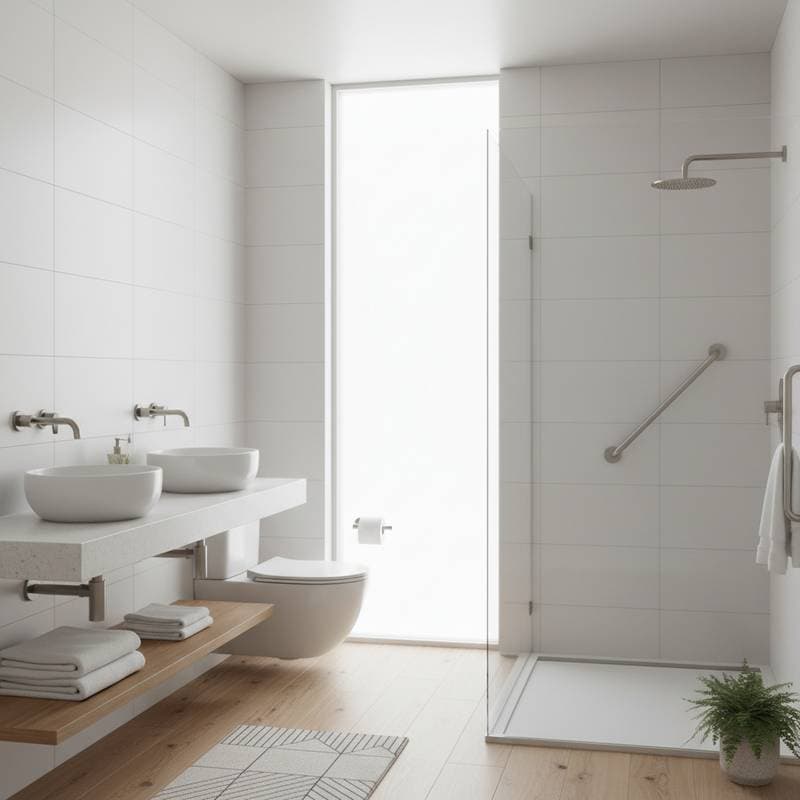Granny Flats: Unlocking $150,000 in Home Equity for 2025
Homeownership involves balancing the desire for property appreciation with efficient use of existing space. One effective solution involves constructing a granny flat, or accessory dwelling unit (ADU), in the backyard. These self-contained structures can elevate property values by as much as $150,000 in dynamic 2025 housing markets, providing both immediate utility and future financial gains.
For those new to such enhancements or considering their first major project, understanding the mechanics of granny flats empowers informed choices. This approach not only expands living options but also positions the property favorably among potential buyers.
Why Granny Flats Drive Property Value
Incorporating additional livable square footage directly enhances a home's market appeal. Appraisers typically assign a premium to ADUs, recognizing them as independent residences that add versatility.
Key factors contributing to this value increase include:
- Expanded Living Options: A secondary unit accommodates diverse needs, such as a dedicated workspace, accommodations for visitors, or a separate rental. This flexibility attracts a wider range of buyers seeking adaptable homes.
- Revenue Generation: Renting out the space produces steady income streams, which can cover construction costs or reduce overall housing expenses. In high-demand areas, monthly rents often range from $1,500 to $3,000, depending on location and amenities.
- Rising Market Preferences: With urban density increasing and affordability challenges persisting, properties featuring built-in housing solutions stand out. Buyers prioritize homes that support multigenerational arrangements or income supplementation.
- Adaptability for Future Needs: As family dynamics evolve, granny flats provide private yet proximate quarters. This design anticipates trends like aging-in-place strategies, preserving the home's relevance over decades.
Even without immediate occupancy, the mere existence of an ADU enhances perceived potential, often leading to quicker sales and higher offers.
Homeowner Essentials for Granny Flat Projects
Project Difficulty and Timeline
Intermediate-level projects require basic construction knowledge, though full builds demand expertise. Expect timelines from three to twelve months, influenced by permitting and weather conditions.
Essential Tools and Materials
Gather a measuring tape for precise layouts, a level to ensure structural integrity, a drill and saw for assembly, and comprehensive safety gear including gloves and goggles. Obtain detailed building plans and secure necessary permits early to avoid delays.
DIY Versus Professional Involvement
Handle straightforward elements like interior painting or exterior landscaping to save costs. Delegate complex aspects such as foundation pouring, electrical wiring, plumbing installation, or load-bearing modifications to licensed contractors for compliance and safety.
Cost Breakdown
Finishing touches through DIY efforts might cost a few hundred dollars for paint and fixtures. A complete professional construction varies from $50,000 for basic models to over $150,000 for customized designs incorporating high-end materials and energy-efficient systems.
Budget-Friendly Strategies to Build Value
Large-scale builds intimidate many due to upfront expenses, yet accessible methods exist to realize granny flat benefits without excessive spending.
- Repurpose Current Structures: Convert an attached garage or unfinished basement into a compliant unit by adding insulation, windows, and basic utilities. This approach minimizes demolition and leverages existing foundations.
- Opt for Prefabricated Options: Modular ADUs arrive nearly complete from manufacturers, reducing on-site labor by up to 50 percent. Installation often completes in weeks, with costs starting at $80,000 for a 400-square-foot unit.
- Scale to Essentials: Begin with a compact studio layout focusing on core elements like a kitchenette and bathroom. This foundational setup allows value addition while permitting future expansions.
- Incorporate Phased Upgrades: Integrate sustainable features incrementally, such as photovoltaic panels for energy independence or low-flow fixtures to lower utility bills. Each addition compounds savings and appeal.
View the granny flat as a progressive asset. Incremental investments align with financial capacity while steadily elevating overall property worth.
Ensuring Long-Term Maintenance and Returns
Post-construction care sustains the investment's value, preventing depreciation in tight housing markets.
Regular upkeep involves systematic checks to identify issues promptly. Schedule annual professional inspections alongside routine homeowner tasks.
Essential maintenance practices encompass:
- Inspecting plumbing systems quarterly for leaks or corrosion to avert water damage.
- Clearing gutters and examining roof integrity biannually to protect against seasonal wear.
- Verifying functionality of smoke and carbon monoxide detectors monthly, replacing batteries as needed.
- Applying fresh paint and resealing caulks every two to three years to shield against environmental elements.
- Maintaining surrounding landscaping through seasonal trimming to uphold aesthetic standards and prevent overgrowth.
Diligent maintenance not only preserves equity but can amplify it through enhanced energy efficiency and modern updates, ensuring the ADU remains a competitive feature.
Steps to Launch Your Granny Flat Initiative
Embarking on a granny flat project transforms underused yard space into a multifaceted resource. Start by assessing local zoning regulations and consulting appraisers to project value impacts.
Develop a detailed blueprint outlining size, layout, and budget allocations. Engage architects or builders experienced in ADU compliance to navigate codes seamlessly.
Upon completion, the structure supports current family requirements while bolstering economic security. It facilitates income opportunities, accommodates relatives comfortably, or elevates resale prospects, yielding enduring advantages in evolving real estate landscapes.



